|
When the sun is low its rays pass across the curved surface of the
earth and encounter the thickest film of atmosphere than at any other point
during the day .
The shorter light rays (the blue end of the spectrum) are almost
entirely deflected by the heavier particles in the atmosphere whereas the
reds and oranges (the longer wave lengths) are the ones that will reach
the observer. Under certain conditions, like after a rainstorm, the sunsets
can be bluer whereas after a fire they often become redder.
It all depends on the 'thickness' of the atmosphere.
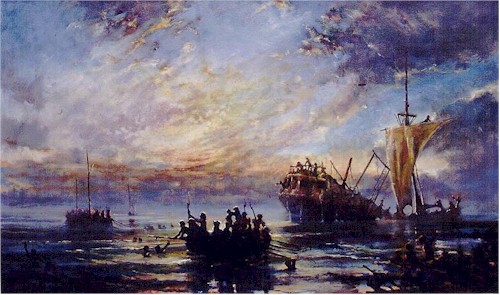
When the sun tries to penetrate the atmosphere, or clouds near the
horizon, we notice that the thicker the mist (atmosphere) the deeper the
red. Thinner mists will produce orange, then even thinner, golds and finally
yellows.
You can decide for your self why some sailors say red sunsets bode a fine
day ahead?
The red light sometimes strikes the underside of the clouds directly
overhead and turns them red, yellow and orange depending on the wave lengths
of light that have managed to penetrate the soup of the earth's atmosphere.
Let us now apply these principles to painting...

The color gradient from blue to red matches exactly the sequence
that occurs in the rainbow or light spectrum. Here the sun manages to blast
through forming a halo of yellow and red. The dark strip represents
a thick cloud an shows its effect.
To be completely brutal and simplistic see below... but you get the
idea of the theory!
STUDENT ACTIVITY: Using strips of multi-colored cellophane (semi-transparent) paper and two small cut out 'images' construct an atmospheric 'collage' over a white background. Cut hole for sun. Allow 40min.
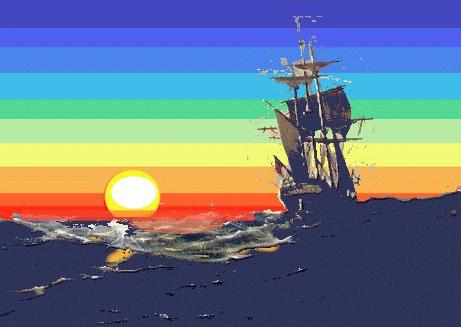
... its all so much easier (and subtle) using oil paint.
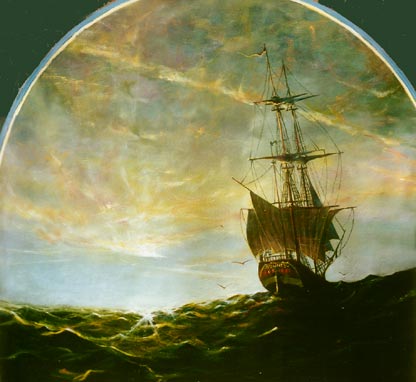
Note - when painting waves think of them as a series of semi-reflective
mirrors.

STUDENT ACTIVITY: Copy the diagram above and find a suitable photograph that illustrates this phenomena. Also read lesson on 'waves' in the advanced section.
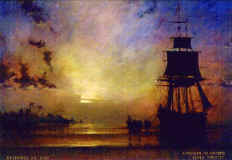
Sometimes the sea will become transparent and the sand begins
to show through - in this
painting of girls bathing the sand is an underlying yellow ochre..
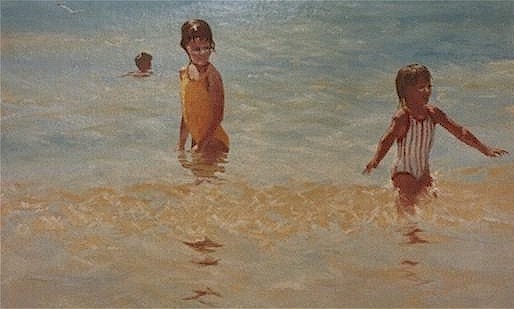
From the information shown here you should be able to map
all the colors of the sky although you don't see the sky itself.
Next we examine what we see when
we look away from a sunset or sunrise
|